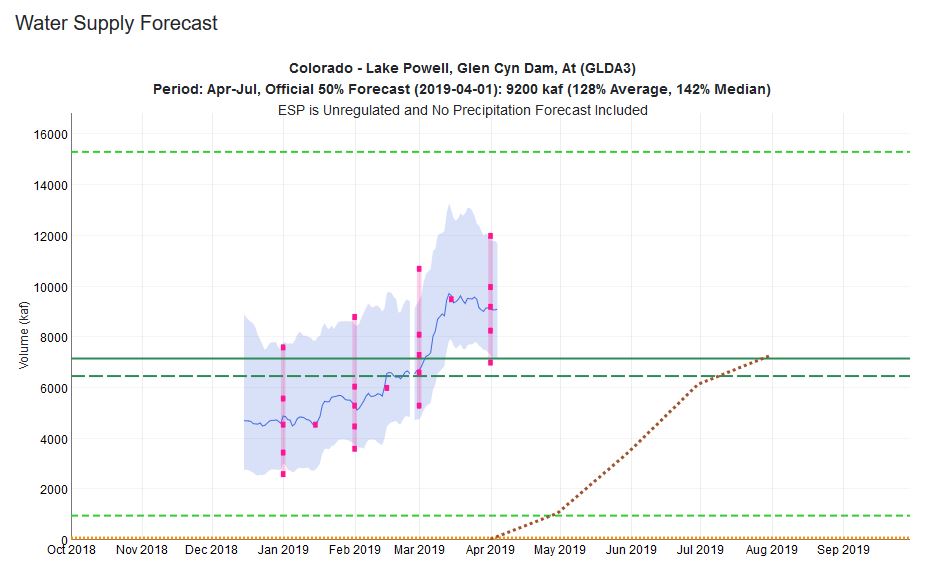The Colorado Basin River Forecast Center’s April 1 forecast is up 1.9 million feet from a month earlier. How to think about how much water that is?

CBRFC April 1 2019 forecast
A friend who thinks a lot about water and public communication, but who is not from the Colorado River Basin, was commenting recently on our euphemisms – the “structural deficit” in particular. For those not familiar with the term, it is the amount by which the Lower Colorado River’s water is overallocated. The system’s “paper water” – allocations handed out in the system’s rules – is 1.2 million acre feet greater than the actual available “wet water”.
Seeing our language from the point of view of a smart outsider was helpful, and gave me pause. I ultimately had to agree that structural deficit was a) a euphemism that doesn’t work at all well in communicating with the general public, and b) an incredibly useful language tool for the informed Colorado River community.
The alternative language, still commonly used, is “drought”. But drought offloads the responsibility to climate. “Structural deficit”, for those thinking hard about the river, moves the problem back within water management accountability. The difference involves which audience you’re speaking with.
Since I presume anyone patient enough to stick with my blog blathering this long is likely a member of “b”, I’ll double down on “structural deficit” for you.
The increase in the March forecast is equal to ~1.6 Structural Deficits.

What’s wrong with simply saying “over-allocated”?!
Brian – “Over-allocation” and its variants are great, and I use it a lot, especially in communicating with broader audiences. People have been talking in general terms about over-allocation for ages. But it lacked the sort of specificity we needed within the river management community. “Structural deficit” caught on within the narrower community because it was useful in specifying which bit of the over-allocation we were talking about. It carries a bunch of definitional baggage that is very specific – a presumption of Upper Basin compact and treaty compliance and full Lower Basin deliveries – which works for people already familiar with the terminology. So for my “a” above – yes, absolutely, “over-allocation” with some contextual explanation is the better choice. But for “b”, “structural deficit” has proven enormously useful.